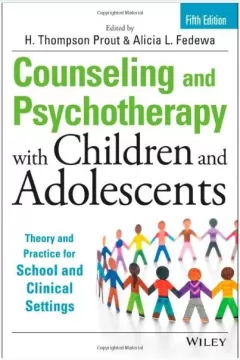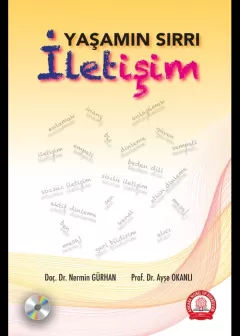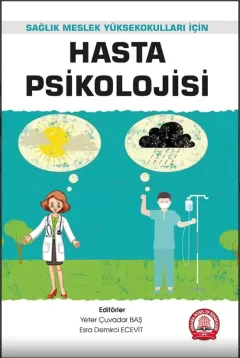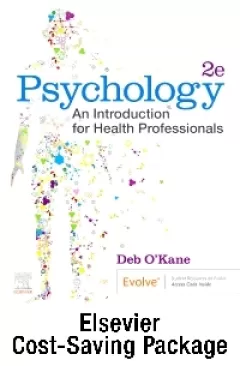
The Stigma of Mental Illness: Strategies against social exclusion and discrimination
[indirim]
-
Sayfa Sayısı: 256
-
Kitap Dili: İngilizce
-
Basım Yılı: 2022
-
ISBN Numarası: 9780323834292
People with mental illness are often painfully familiar with overt prejudice or more subtle forms of mistreatment. The stigma and discrimination associated with their disorders can have effects in several areas of life: in social interactions, in work and healthcare settings, in the legal system and the media. Many withdraw due to shame and do not seek help. In turn, stigma can prove to be a more serious problem than the disorder itself. Yet too little is done to reduce stigma and its impact.
The Stigma of Mental Illness: Strategies Against Discrimination and Social Exclusion offers up the knowledge necessary to understand and fight against stigma and discrimination. It will be invaluable to all health professionals, social workers, healthcare managers and policy makers with an involvement or interest in mental illness.
- Broad coverage of the forms and consequences of stigma
- Specific treatment of stigma in relation to diagnoses such as dementia and autism
- Perspectives and strategies of a service user and a relative
- Up-to-date concepts regarding exclusion and discrimination
- Practical strategies for service users, relatives, healthcare professionals and policy makers
1. Introduction 1.1. Aims and content of the book (i) To clarify forms and consequences of stigma and (ii) to outline anti-stigma programs, including evidence on their efficacy
1.2. Language Person-first language, thought police as distraction from anti-stigma work
1.3. Types of anti-stigma agendas Services agenda, rights agenda, self-worth agenda
1.4. Should we sugarcoat stigma by downplaying the challenges of mental illness? Impairments due to mental illness, disability and label
1.5. Studies and evidence Types of available evidence, research synthesis, pros and cons of meta-analyses; this will inform readers about types of evidence that are referred to throughout this book
1.6. Diagnosis and mental health continuum Pros and cons of psychiatric diagnoses, their limited validity, continuum model
1.7. Stigma in a time of rapid societal change Increased difficulty for disadvantaged individuals with mental illness in a world in crisis (Social inequality, migration etc.)
1.8. What is not covered in this book Special topics and populations, e.g. people in forensic psychiatry; mental illness stigma in low and middle-income countries
1.9. Perspective of this book Written by the author in his roles as researcher, clinician, peer and anti-stigma worker; voices of service users and relatives are present throughout the book with quotes from qualitative research as well as by the contributions of JBP and MHG (see above)
2. Historical and social aspects of mental illness and social exclusion The aim of this chapter is to contextualize mental illness stigma in terms of its historical and social aspects – both of which are crucial to understand current stigma and ways to address it. 2.1. Historical aspects Madness in ancient Greece, Greek tragedy and concept of melancholia; forced sterilization and "euthanasia" in Nazi Germany; psychiatric reform movement and anti-psychiatry of the 1960ies
2.2. Prevalence and burden of mental disorders Prevalence, burden, disability-adjusted life years, costs of mental disorder in- and outside the mental healthcare system, lack of adequate policy response, key populations (e.g. youth), health economy perspective, "mental health in all policies" approach
2.3. Mental health as a task for society Social determinants of mental health, "deaths of despair", need for a social model of mental health, social solutions
3. What is stigma? This chapter introduces basic concepts of stigma as it applies to people with mental illness and also to other stigmatized conditions; the aim is to clarify the concepts and their implications for interventions based on sociological and social psychological literature (prior to discussing stigma as it specifically applies to people with mental illness in Chapters 5 ff.). 3.1. Terminology, models and forms of stigma 3.1.1. Origin of the word stigma 3.1.2. Stigma as umbrella term 3.1.3. Social cognitive model Stereotypes, prejudice, discrimination (Corrigan) 3.1.4. Sociological model Difference, labeling, separation, status loss, discrimination, power (Link & Phelan) 3.1.5. Forms of stigma: Public, self, structural 3.1.6. Levels of stigma Matter of degree (subtle/blatant), explicit vs. implicit, open vs. indirect, microaggression 3.1.7. Stigma and knowledge – mental health literacy 3.1.8. Intersectionality Double stigma, origin of concept
3.2. Categorization and stereotypes as basic elements of stigma 3.2.1. What is categorization? 3.2.2. Categorization and prejudice reduction De-categorization, group differentiation, re-categorization 3.2.3. What are stereotypes? 3.2.4. Stereotype content Fiske’s stereotype content model: warmth and competence; stereotypes and kernel of truth discussion; stereotypes as normal perception of bizarre behavior? 3.2.5. Development of stereotypes Unconscious association, outgroup homogeneity effect, illusory correlation 3.2.6. Maintenance of stereotypes Biased processing, linguistic intergroup bias etc. 3.2.7. Application of stereotypes 3.2.8. Changing stereotypes
3.3. Functions of stigma 3.3.1. Functions for individuals Downward comparisons, self-esteem, terror management 3.3.2. Functions for own group Social cooperation, dilemma of trust, social identity 3.3.3. Comprehensive models Social dominance, just world beliefs, system justification, "to keep people down, in or away" (Jo Phelan) 3.3.4. Evolutionary perspective Avoidance of illness risk, smoke detector principle and false positives/overreactions; avoidance of poor cooperation partners
4. Consequences of stigma 4.1. Consequences for the non-stigmatized Common stereotypes, ambivalence, anxiety/insecurity, discrepancy between self-reported attitudes and behavior
4.2. Consequences for the stigmatized Experiences of discrimination, stigma consciousness, stereotype threat, stigma stress, attributional ambiguity, stigma and poor health
4.3. How can stigmatized individuals cope with stigma? Blame discrimination, ingroup comparisons, secrecy, social withdrawal, challenge stigma
4.4. Interaction between the stigmatized and the non-stigmatized From the perspective of the non-stigmatized, and of the non-stigmatized
5. People with mental illness and their relatives 5.1. People with mental illness 5.1.1. Public stigma Public attitudes, change over time, experience and anticipation of discrimination, public stigma and self-stigma 5.1.2. Role of biological models of mental illness Attribution theory, genetic essentialism, consequences of biological models 5.1.3. Self-stigma, shame, why try What is self-stigma, predictors of self-stigma, empowerment and stigma resistance, awareness of illness/insight 5.1.4. Secrecy and disclosure Pros and cons of disclosure, conditions of disclosure 5.1.5. Stigma stress 5.1.6. Recovery and stigma 5.1.7. Stigma as a barrier to service use 5.1.8. Structural discrimination Legal aspects, funding for health services and research; other aspects of structural discrimination are discussed in the respective societal domains in Chapter 7
5.2. People with a history of suicidality Suicide stigma, stigma and suicide prevention
5.3. Young people with psychosis risk or first episode of psychosis
5.4. People with specific diagnoses Aim of this subchapter is to cover a number of diagnoses for which the content of stigma and its consequences differ from other mental disorders: Autism, bipolar disorder, borderline personality disorder, dementia, eating disorders, intellectual disability, substance use disorders
5.5. People with mental illness and other stigmatized characteristics (intersectionality)
5.6. Families and relatives
5.7. Children and adolescents
5.8. Migrants and refugees with mental illness
6. First-person accounts 6.1. Martina Heland-Graef: My experience of stigma and psychosis The author is a leading German peer advocate who fights, e.g., for mental health service reform and human rights for people with severe mental illness.
6.2. Janine Berg-Peer: My life and my daughter with severe mental illness The author is board member of the German National Alliance of Relatives of People with Mental Illness and has published several books on this topic.
7. Stigma in different societal domains (incl. anti-stigma interventions) 7.1. Employment 7.1.1. People with mental illness who work Public attitudes, employer attitudes, experiences of discrimination, disclosure, role of clinicians, structural barriers in the healthcare system, role of companies, anti-stigma interventions in the workplace 7.1.2. People with mental illness who are unemployed Disclosure during job search, interventions, supported employment, supported education, structural discrimination and barriers to finding work
7.2. Housing and Homelessness Homelessness and poor health, media and public attitudes, experiences of discrimination, structural problems in the social and healthcare sectors, Housing First
7.3. Healthcare 7.3.1. and 7.3.2. Individual level discrimination and interventions Attitudes of service providers, experiences of service users, interactions of service providers and service users, service providers with own experience of mental illness, "stigmatization of psychiatrists", anti-stigma interventions for service providers 7.3.3. and 7.3.4. Structural level discrimination and interventions Fragmentation of the healthcare service system, lack of implementation of psychosocial interventions, poor somatic care, architecture of mental healthcare, structural interventions, strengthening outpatient care, integrated care, prevention, peer support, avoiding coercion
7.4. Media Stereotypes, types of media (film, TV, newspaper, social media, video games), information and disinformation, relevance of media, media and suicide, origins of stigma in media, anti-stigma interventions for media professionals and media guidelines, role of peers and citizen journalism
7.5. Legal system Stigma and social justice; UN-convention on rights of persons with disabilities; new German legislation on social participation of persons with disabilities; voting rights; new Bavarian law on acute admissions to psychiatric hospital and protest against this law
8. Programs to reduce public stigma 8.1. Education Approach, problems, content, program types, evidence of efficacy
8.2. Name change Approach, side effects, evidence of efficacy
8.3. Protest Approach, examples, evidence of efficacy
8.4. Contact Approach, evidence of efficacy, contact and self-stigma, contact and social change, types of interventions, key ingredients, TLC3 (targeted, local, continuous, credible change; Corrigan), examples of contact-based programs
9. Programs to reduce self-stigma 9.1. Strategies to reduce self-stigma and to increase empowerment Psychoeducation, cognitive therapy, narrative approaches (Narrative Enhancement and Cognitive Therapy), photovoice, self-help and peer support
9.2. Honest, Open, Proud Honest, Open, Proud as a peer-led program to support people with mental illness in their decision whether and how to disclose their illness; program rationale and content; data on efficacy, program versions and issues of implementation
10. Programs to address treatment-related stigma and to facilitate help-seeking 10.1. General population and healthcare
10.2. Self-stigma, shame and relatives/carers
10.3. Evidence
11. Programs to reduce structural discrimination Summary of key approaches (specific interventions to reduce structural discrimination are discussed in Chapter 7 for the respective contexts: legal system etc.)
12. National anti-stigma campaigns – examples and challenges 12.1. Examples in English speaking countries Time to Change, UK; See Me, Scotland; Opening Minds, Canada
12.2. The situation in German speaking countries Lack of comparable national anti-stigma campaigns in German speaking countries
12.3. Funding for anti-stigma programs
12.4. Leadership of antistigma programs Peers/service users should lead programs
13. Summary and outlook Factors that facilitate social change; future developments (machine learning; social media and real-time interventions; biogenetic research, biomarkers of mental illness, risks of labeling and discrimination; embracing diversity as a value that counters stigma
-
256
-
İngilizce
-
2022
-
9780323834292
[Yalnızca kayıtlı kullanıcılar değerlendirme yazabilir.]
-
[Yararlı] () [Yararlı Değil] ()











